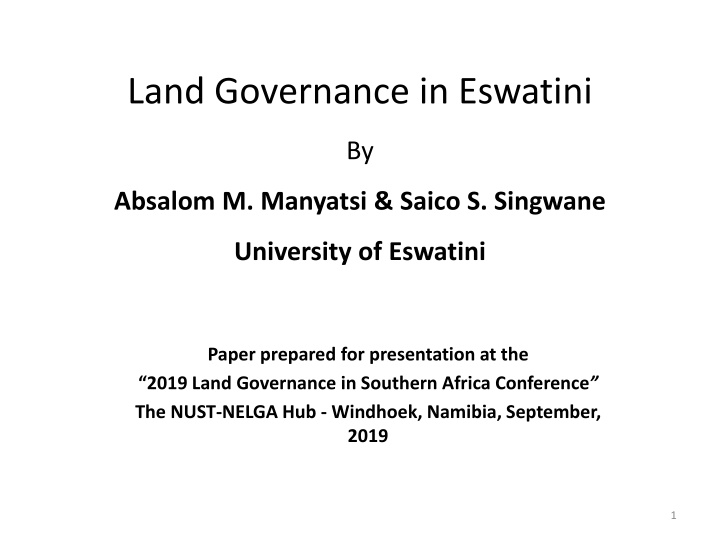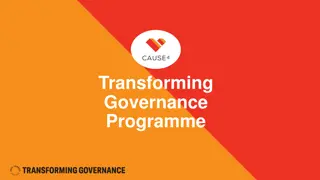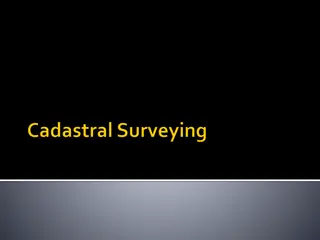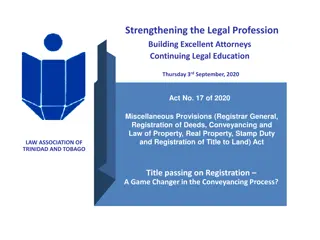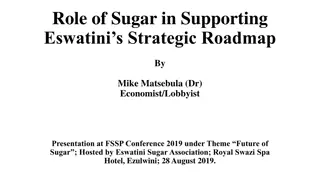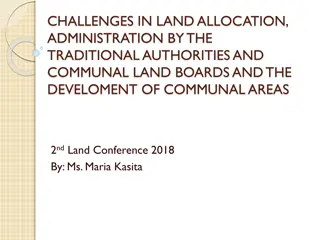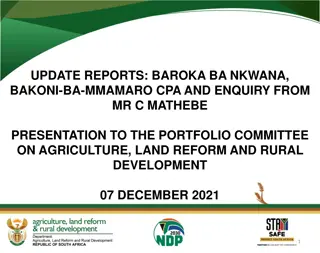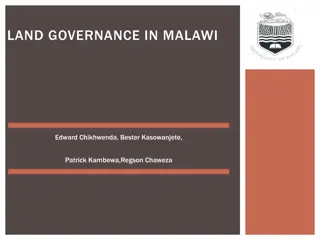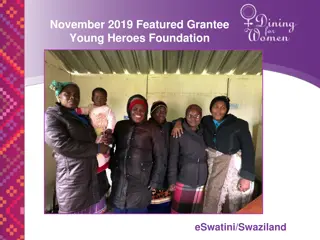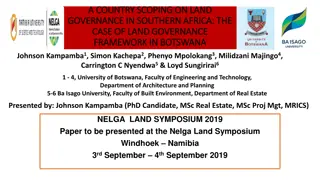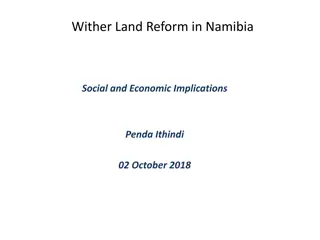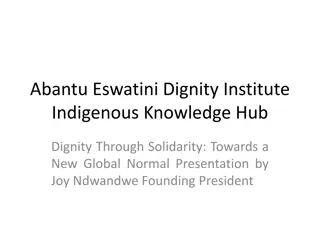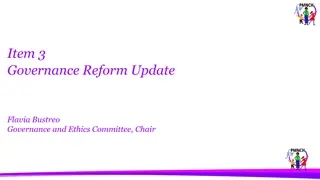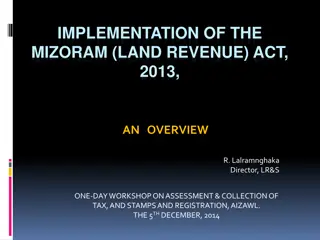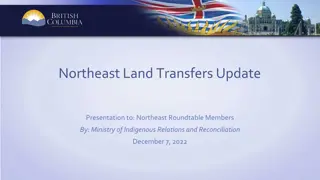Land Governance in Eswatini
This paper provides an overview of the land governance system in Eswatini, focusing on key aspects such as land tenure forms, administration, dispute resolution, and challenges. It highlights the role of traditional authorities, regional administration, and the Ministry of Natural Resources and Energy in land management.
Download Presentation

Please find below an Image/Link to download the presentation.
The content on the website is provided AS IS for your information and personal use only. It may not be sold, licensed, or shared on other websites without obtaining consent from the author.If you encounter any issues during the download, it is possible that the publisher has removed the file from their server.
You are allowed to download the files provided on this website for personal or commercial use, subject to the condition that they are used lawfully. All files are the property of their respective owners.
The content on the website is provided AS IS for your information and personal use only. It may not be sold, licensed, or shared on other websites without obtaining consent from the author.
E N D
Presentation Transcript
Land Governance in Eswatini By Absalom M. Manyatsi & Saico S. Singwane University of Eswatini Paper prepared for presentation at the 2019 Land Governance in Southern Africa Conference The NUST-NELGA Hub - Windhoek, Namibia, September, 2019 1
Profile of Kingdom of Eswatini Area of 17,350 km2 Population of 1,093,238 531,111 (48.6%) males 562,127 (51.4%) females. Urban population is 21.3%. Urbanisation is 1.4% per annum. 2
Profile of Kingdom of Eswatini Country has four administrative region. Each region is headed by Regional Administrator. There are 59 tinkhundla centres (constituencies). There are 385 chiefdoms. There are several chiefdoms under each constituency. 3
Profile of Kingdom of Eswatini Two basic land tenure forms. Title Deed Land (TDL) and Swazi Nation Land (SNL). SNL covers about 75% & TDL covers about 25%. Chiefs are traditional land administrators. Majority of rural Swazis live in SNL, which is subject to customary law and administration. 4
Land Governance and Administration Function of Land Agencies Alloca tion Develop ment Disput es Resettle ment Subdivis ion Use Traditional Authority (Chiefs) Regional Administration Urban Local Administration Ministry of Agriculture MNRE Land Management Board 5
Land Governance and Administration The MNRE through Surveyor General s Department is responsible for cadastre mapping. The MNRE through Land Administration Department together with urban local administration is responsible for keeping information on land acquisition in TDL. The MNRE (Deeds Registry) is responsible for keeping information on land registration and transfers. The MNRE (Land Valuation Department) and urban local administration keep information of value of land (for TDL). 6
Key Challenges in Land Governance Delays in enacting legislation to enable proper function of Land Management Board Lack of information on land boundaries on SNL Prevalence of forced evictions Disputes between chiefdoms on boundaries Lack of land ownership and rights Dispute resolution mechanism. 8
Enacting Appropriate Legislation Land Management Board is responsible for overall management and regulation of land. It was established by constitution in 2005. Legislation to make it operation not approved by parliament. They Include draft Land Policy (2013), Land Bill (2015) and Swazi Nation Land Agricultural Commercialization Bill (2016). There is perceived conflict between legislation and traditional powers. 9
Lack of Information on Land Boundaries on SNL The Surveyor General undertakes cadastral mapping and keeps cadastral information for the whole country. Cadastral maps are not in appropriate scales for some developments. Boundaries for chiefdoms have not been adequately identified, verified and mapped. The operationalization of the proposed Land Act will require verified and agreed upon chiefdom boundaries. There is lack of National Land Registration System for SNL that will be required to implement Land Act. 10
Lack of land ownership and rights People are often compensated when property is taken from them for national developments or any other purposes. However in SNL compensation is only for improvements on the land, and not for land, as it is not owned. There is no compensation for customary rights in both SNL and TDL. 11
Prevalence of forced evictions The practice of forced eviction is common in both SNL and TDL. Chiefs would issue eviction orders for customary crimes such as where a resident defied orders from the King. Farm Dwellers are often evicted in TDL and evictions are ordered by court. The farm dwellers are evicted without compensation for improvements on land or for loss of customary rights. 12
Disputes Between Chiefdoms Inter-chieftain land disputes fracture social relationships, and they divide the residents who may be staying in the same location. They ordinarily involve boundaries and are usually provoked by development projects. Inter-chieftain land disputes often result in evictions and retard developments. 13
Dispute resolution mechanism. The Farm Dwellers Act regards the owner of a farm in TDL as sole owner of land, and does not take into consideration possible customary rights for dwellers The powers of traditional local authorities have been eroded in some communities because of chieftaincy disputes and loss of authority and respects by traditional leaders. The traditional system of appeal on land disputes is too bureaucratic and take too long to resolve issues of land disputes 14
Thank you 15
